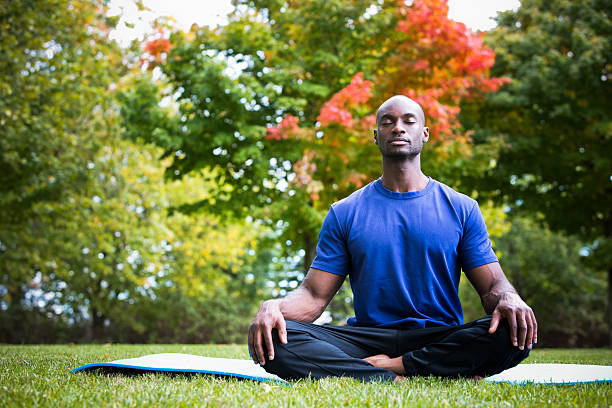In today’s fast-paced world, mental health challenges like anxiety, depression, and chronic stress are increasingly common. While therapy and medication are valuable treatment options, one of the most accessible and powerful tools for enhancing mental well-being is exercise. Physical activity doesn’t just transform the body; it transforms the mind.
In this detailed article, we explore how exercise impacts mental health, the science behind its benefits, different types of workouts, and practical tips for incorporating movement into your daily routine. Let’s dive into how breaking a sweat can build a stronger, healthier mind.
Understanding the Mind-Body Connection
Our mental and physical health are deeply intertwined. Exercise stimulates a range of physiological processes that directly affect brain function, mood, and emotional stability. Movement increases blood flow to the brain, delivers essential nutrients, and encourages the release of neurotransmitters that make us feel good.
When you move your body, you also shift your emotional state. That’s why even a short walk can clear your head, ease tension, and improve focus. Let’s explore the scientific mechanisms behind these powerful mental effects.
The Science Behind Exercise and Mental Health
Exercise influences the brain in several profound ways:
Releases Mood-Boosting Chemicals
Physical activity triggers the release of endorphins, often known as “feel-good hormones.” These natural chemicals interact with receptors in your brain to reduce the perception of pain and promote feelings of pleasure and calm.
Additionally, exercise boosts dopamine, serotonin, and norepinephrine levels—neurotransmitters that play a key role in mood regulation and mental clarity.
Reduces Stress Hormones
Chronic stress elevates cortisol, a hormone linked to anxiety, weight gain, and sleep disturbances. Exercise helps lower cortisol levels and offers a natural stress-relief outlet by engaging the body in productive, focused movement.
Improves Sleep Quality
Regular physical activity can help regulate your circadian rhythm, making it easier to fall asleep and wake up refreshed. Deep, restorative sleep is essential for emotional regulation and mental clarity.
Enhances Brain Function and Memory
Aerobic exercise, in particular, stimulates the growth of new brain cells and strengthens the hippocampus, the area of the brain associated with memory and learning. This not only supports better cognitive function but also protects against age-related decline.
Increases Self-Esteem and Confidence
Achieving fitness goals or simply showing up consistently builds a sense of achievement. Over time, this contributes to increased self-worth and confidence, which are crucial for mental wellness.
Exercise as a Natural Antidepressant
Several studies have shown that regular exercise can be as effective as antidepressant medication for some individuals with mild to moderate depression.
Stimulates Positive Neural Pathways
Exercise encourages brain plasticity—the ability of the brain to adapt and form new connections. This neuroplasticity is vital in overcoming negative thought patterns and promoting mental resilience.
Reduces Anxiety Sensitivity
Engaging in high-intensity exercise raises your heart rate and breathing—symptoms often mimicked during anxiety. As your body becomes accustomed to these sensations during workouts, you may develop a healthier response to anxiety triggers.
Promotes Emotional Regulation
People who exercise regularly tend to have better control over their emotions. Movement provides a structured outlet to process emotions, reduce rumination, and build patience.
Types of Exercise That Benefit Mental Health
Not all exercise has to be intense or time-consuming. Here are different types of physical activity that can significantly improve your mental well-being:
Aerobic Exercise (Cardio)
Running, cycling, swimming, brisk walking, and dancing get your heart pumping and are proven to improve mood and reduce anxiety.
Duration: Aim for at least 30 minutes, 3-5 times per week.
Strength Training
Weightlifting and resistance exercises can boost self-esteem and reduce depressive symptoms by promoting a sense of strength and control.
Duration: 2-3 sessions per week focusing on major muscle groups.
Yoga and Stretching
Yoga combines movement, breathing, and mindfulness—a powerful trio for reducing stress and anxiety.
Duration: 15-60 minutes, depending on your schedule and practice.
Mindful Movement (Tai Chi, Qi Gong)
These low-impact activities improve balance, focus, and inner calm. They’re particularly effective for managing stress and supporting emotional regulation.
Outdoor Activities
Hiking, walking in nature, or simply spending time outside helps reduce cortisol and increases exposure to vitamin D, which is linked to lower depression rates.
Overcoming Barriers to Exercise
Despite knowing the benefits, many people struggle to stay consistent with physical activity. Here’s how to address common obstacles:
Lack of Time
Start with short sessions. Even 10-15 minutes of movement can provide mental health benefits. Consider walking meetings, home workouts, or active breaks.
Low Motivation or Energy
Set realistic goals and focus on the immediate mood benefits. Find a workout buddy, use motivational playlists, or reward yourself for consistency.
Fear of Judgement
Exercise in private, at home, or in smaller classes. Remember that everyone starts somewhere and that the journey is personal.
Mental Health Symptoms
Start small and choose gentle, enjoyable activities. If depression or anxiety feels overwhelming, consult a healthcare provider for support.
Creating an Exercise Routine for Mental Wellness
Here’s how to build a mental-health-focused fitness routine:
Set Clear, Achievable Goals
Goals like “walk 3 times this week” or “attend one yoga class” are specific and measurable. Start small and build momentum.
Make It Enjoyable
Pick activities you like—whether that’s Zumba, hiking, or swimming. Enjoyment makes consistency easier.
Be Consistent, Not Perfect
Focus on building the habit rather than being perfect. Consistency leads to long-term change.
Track Your Progress
Use a journal, fitness app, or calendar to log workouts and mood changes. Seeing progress reinforces motivation.
Incorporate Rest and Recovery
Recovery is essential for mental and physical well-being. Allow rest days and listen to your body.
Combining Exercise with Other Mental Health Tools
While exercise is powerful, it works best when combined with other mental wellness practices:
- Therapy: Helps process emotions and build coping strategies.
- Mindfulness: Enhances present-moment awareness and reduces stress.
- Healthy Diet: Fuels brain function and mood regulation.
- Social Connection: Encourages accountability and emotional support.






